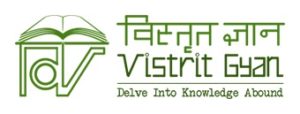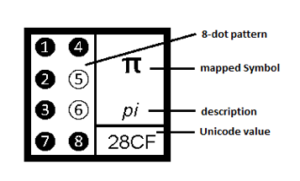About
Anupam Kumar Garg
Founder & CEO, Vistrit Gyan
 I am an IIT Kanpur Computer graduate and MBA (Finance) with more than 3 decades long experience in IT/Software space. A Senior Member of Institute of Electrical and Electronics Engineers (IEEE) and Member of All India Management Association (AIMA), I was, in my last full-time role, the Program Manager/ Engineering Manager and Agile Driver for Acrobat 6, 7, 8, 9, X, XI, and Acrobat DC at Adobe.
I am an IIT Kanpur Computer graduate and MBA (Finance) with more than 3 decades long experience in IT/Software space. A Senior Member of Institute of Electrical and Electronics Engineers (IEEE) and Member of All India Management Association (AIMA), I was, in my last full-time role, the Program Manager/ Engineering Manager and Agile Driver for Acrobat 6, 7, 8, 9, X, XI, and Acrobat DC at Adobe.
 In 2015, I took an early retirement to pursue my other life goals full-time – primarily among them had been to work towards promotion and advancement of Maths and Science knowledge and learning among the students with visual disabilities. My initiative, Vistrit Gyan (Regn: AAE-6603/2015) based in Noida (Delhi-NCR) India, is an endeavor in this direction.
In 2015, I took an early retirement to pursue my other life goals full-time – primarily among them had been to work towards promotion and advancement of Maths and Science knowledge and learning among the students with visual disabilities. My initiative, Vistrit Gyan (Regn: AAE-6603/2015) based in Noida (Delhi-NCR) India, is an endeavor in this direction.
There are estimated around 40 million people with visually disabilities in the world – majority of them living under extreme economic and social deprivation. While the learning of Maths and Science may provide them the right platform towards a vocational or professional career, a lack in this regard robs them of this opportunity.
Unfortunately, learning Maths and Science had been extremely challenging for these students – not any less for the special educators who teaches them. Hence, I have set my aim to improve the education for such students with visual disabilities through suitably designed and innovative learning kits, learning aids, and teaching aids.
As part of this enveavor, I have designed “GEOMKIT”, a new Tactile Geometry Kit (Patented) suitable to make geometrical constructions; and “Braille LINEVIEW Slate”, a Direct Braille Slate (Patent published under PCT) suitable to do Maths for students with visual disabilities. GEOMKIT has been launched at IIT Delhi and is already available commercially at saktek.in platform. Braille LINEVIEW Slate, thankfully, received Research Grant from Department of Science & Industrial Research (DSIR) Government of India – its prototype is developed in IIT Kanpur MedTech Lab and is ready for commercial production.
More product designs on the similar lines are in the pipeline.
I feel proud to state that I have received the prestigious NCPEDP-Mphasis Universal Design Award 2020 for my innovative work in the field of Assistive Technology.

Furthermore, I have also designed “Braille-8 Unicode System”, a new Braille language which is an enhancement to the existing 6-dot Braille – aiming to aid scientific learning. Braille-8 has already been presented in the IEEE Conference held at Bangalore on Nov 7-9, 2016 and is already in public domain. Additionally, in order to provide the scientific learning benefits of Braille-8 to the Indian Braille users, I am presently mapping the complete 6-dot Bharati Braille (a unified braille script for the 10 major Indic languages) to “Bharati Braille-8” – the Indic languages include Devanagari/Hindi, Bengali, Gujarati, Gurumukhi/Punjabi, Tamil, Telugu, Kannada, Malayalam, Oriya, and Urdu.
Publications
Anupam Kumar Garg, “Braille-8 – the Unified Braille Unicode System”, Jun 15, 2017, IEEE International Conference on Advanced Networks and Telecommunications Systems (ANTS), Bangalore, India, 2016.
 Abstract: Traditional Braille is a 6-dot code that can represent maximum 64 unique symbols with each braille cell. This is grossly insufficient to represent even ordinary English text (comprising 26 small letters, 26 capital letters, 10 digits, and 14 basic punctuations) — let alone math and science symbols. Thus a braille user has to enter 2 (and sometime 3 or 4) braille cells to enter one character or symbol. This makes braille writing very slow and tedious. Incidentally, 8-dot Braille Unicode was introduced to facilitate the Computer Braille that could represent all 95 computer characters with one braille cell itself. Since 8-dot braille can represent maximum 256 unique symbols, it has huge potential to provide the ultimate solution to all woes faced by braille users while writing texts (in English or in native languages) as well as mathematical and technical text. This paper presents a comprehensive unified braille Unicode system providing a detailed mapping of 8-dot braille Unicode pattern to represent the transcribing codes (in English or any other language) as well as the math, science, and computer symbols/characters — mostly with one braille cell itself.
Abstract: Traditional Braille is a 6-dot code that can represent maximum 64 unique symbols with each braille cell. This is grossly insufficient to represent even ordinary English text (comprising 26 small letters, 26 capital letters, 10 digits, and 14 basic punctuations) — let alone math and science symbols. Thus a braille user has to enter 2 (and sometime 3 or 4) braille cells to enter one character or symbol. This makes braille writing very slow and tedious. Incidentally, 8-dot Braille Unicode was introduced to facilitate the Computer Braille that could represent all 95 computer characters with one braille cell itself. Since 8-dot braille can represent maximum 256 unique symbols, it has huge potential to provide the ultimate solution to all woes faced by braille users while writing texts (in English or in native languages) as well as mathematical and technical text. This paper presents a comprehensive unified braille Unicode system providing a detailed mapping of 8-dot braille Unicode pattern to represent the transcribing codes (in English or any other language) as well as the math, science, and computer symbols/characters — mostly with one braille cell itself.
Keywords: Computers; Encoding; Standards; Writing; Braille Unicode; Braille-8; blind; low-vision; braille pattern; braille standard; braille user; computer braille; eight-dot braille code; visually challenged
Patents
- Anupam Kumar Garg, “Direct Braille Slate with Slate Base, Slate Frame, and Line Guide Unit”, International application number PCT/IN2019/050011, International publication number WO2019/138423A1 published on 18 July 2019
Patent description: In an embodiment, a direct-braille-slate includes a slate-base, a slate-frame, and a line-guide unit. The slate-base includes rows, each row includes cells, each cell includes fixed number of protruded pins to create embossed bump impressions on braille-paper when pressed using stylus. The slate-frame is hingedly coupled with slate-base on one end, and open at other end for inserting braille-paper in between slate-frame and slate-base. A line-guide-unit includes line-guides, each line guide hingedly coupled with an edge portion of slate-frame to move between a closed position and a flipped-open position. Each line-guide includes an elongated body including grooved cell-guides aligned over cells of a row of rows in closed position for creating embossed impressions on the braille-paper, and the row is accessible for reading embossed impressions in flipped-open position. Each line-guide is braille-numbered and has plurality of embossed marking at a fixed interval to locate row-column of braille-cells on the braille-paper. - Anupam Kumar Garg, “Apparatus for Drawing Embossed Geometrical Shapes and Constructions for Visually Challenged and Visually Impaired Users”, patent number 301636, appl. no. 201611040296, Issued on 28 September 2018
Patent description: An apparatus for drawing geometrical shapes and geometrical constructions for visually handicapped users. In an embodiment, the apparatus includes base plate, clamping mechanism, magnetic point markers, and a plurality of geometrical shape tracing members. The clamping mechanism is adapted to secure braille paper onto the base plate. The point marker is configured to be magnetically positioned at various portions of the base plate for creating an embossed point or a hole on the braille paper. The geometrical shape tracing members are configured to be supported over the point marker, where each geometrical shape tracing member is configured with a raised pattern representing a geometrical shape. The braille paper is pressed against the raised pattern using a stylus for creating an embossed geometrical shape or geometrical construction on the braille paper. - Anupam Kumar Garg, Sambit Dash, “Markers for Identifying Projected Graphics Objects in Object Stream”, patent number US8390616B1, Issued on 5 March 2013
Patent description: Methods and apparatus, including computer program products, for processing graphics objects in a model space with more than two dimensions. Information specifying a first view of the model space is received. The first view is defined by a projection of a first subspace of the model space onto a two-dimensional space. The first subspace includes at least a portion of two or more graphics objects. One or more markers are defined for the first view in the first subspace. Each marker for the first view is associated with at least one graphics object in a processing sequence for the first view. An object stream is generated, which includes projected objects that describe markers and graphics objects in the first view and are arranged in the object stream according to the processing sequence for the first view. Markers for the first view can be defined outside of any other view.
